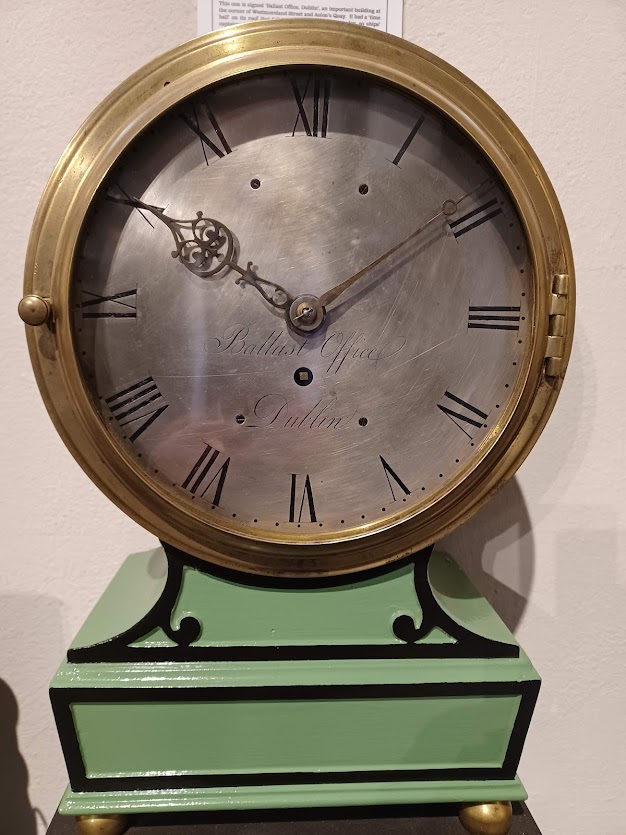Just back from a very quick one-night stay trip to Waterford, after my wife expressed interest in visiting a horological exhibition there.
"You're not going to drag me to any lighthouses?" says she.
"As if!" says I.
To be honest, and my wife agreed, the horological exhibition wasn't up to much. A dozen or so of the finest watchmakers in the world assembled in one room. Each bought one, or maybe two watches to show us. "Yup, that's nice." "Yup, that's nice," "Yup, that's nice." Thirty seconds later and we'd seen everything. Good job it was free.
Undaunted, we decided to try the new Irish Museum of Time which opened in Greyfriars Church last year. A fiver in, which turned out to be a real bargain. A fantastic collection of grandfather clocks, mantle clocks, ship's clocks, Austrian, Japanese, Swiss, you name it they had it. We spent two hours in there which surprised me, as my attention span is normally measured in seconds.
On the upper floor, there were three clocks of Irish Lights interest.
When the Ballast Board became the Commissioners of Irish Lights in 1868, naturally one of the top priorities on their agenda was to buy clocks for their lighthouses. It was important that these ran accurately, otherwise lighting up time might be affected, so they didn't get them on the cheap. The bracket clock above dates from the firm of FM Moore of Dublin and Belfast c. 1868 and was probably from a Waterford or Wexford lighthouse as the donor bought it in an antique dealers on Waterford Quay.
The brass and cast-iron lighthouse clock above was made by William Milton of Dublin and dates from around 1838. Many clocks like this were made by Irish makers for use in lighthouses, harbour masters offices, train stations and canal locks as they had no timber parts, which avoided problems with damp. This one is inscribed 'Ballast Office, Dublin,' the offices of which stood on the corner of Westmoreland Quay and Aston Quay. It had a 'time ball' on its roof that fell at 1pm every day, so that sea-captains and indeed everybody rich enough to own a timepiece, could check the correct time.
This mahogany mantel regulator clock also dates from 1868 and was made by the very famous firm of John Chancellor in Dublin. It is inscribed "Irish Lights Commissioners" along with the Irish Lights flag, a modification of the George's Cross. This particular piece was used at Beeves Rock lighthouse on the Shannon Estuary.
While researching Rotten Island lighthouse in Donegal, I came across a newspaper cutting from the Derry Journal in 1938, which declared that an oak clock in the lighthouse there had been running for 100 years and had never been repaired.
Of course, the question has to be raised - if each of the seventy odd lighthouses belonging to CIL each had at least one clock, where, now that there is no need of them, are they all now? In storage somewhere in an Irish Lights depot? Still in situ at an unwatched lighthouse? Or adorning some retired keeper's mantelpiece?
Personally, I hope it's the latter.



.JPG)
.JPG)
